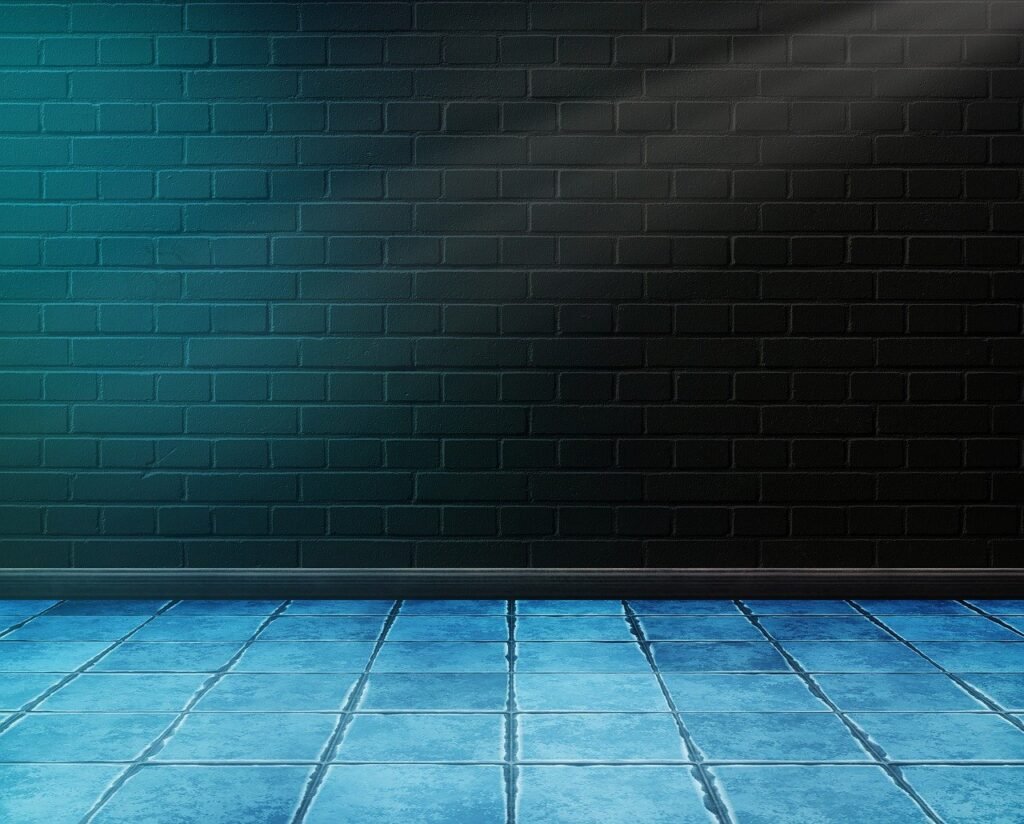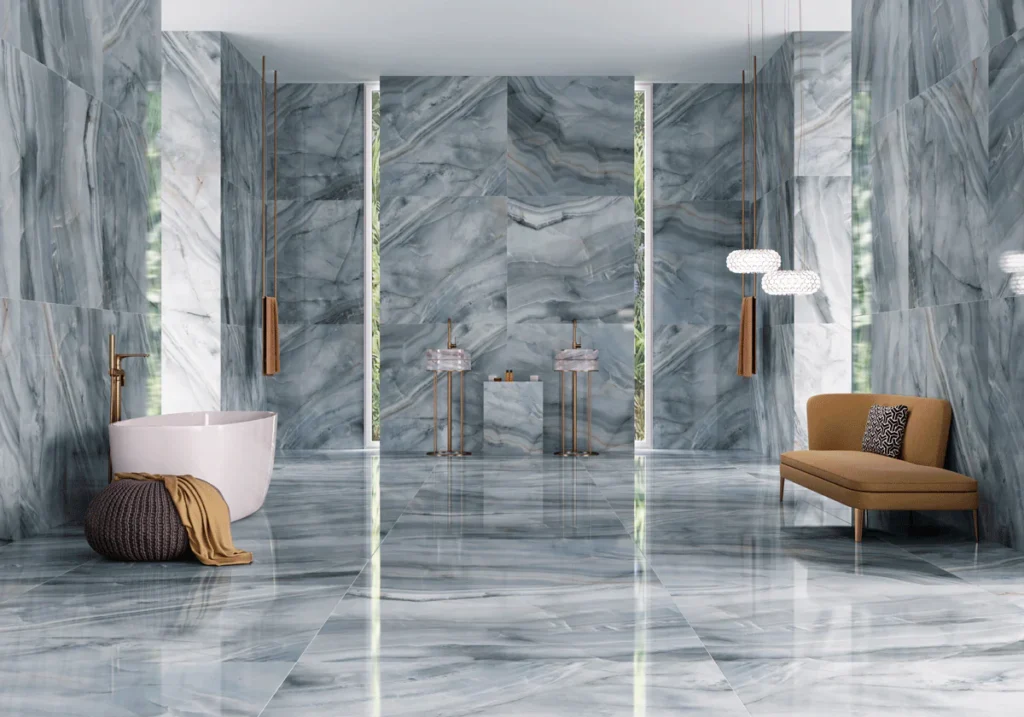The Beauty of Floor Tiles
When it comes to home decor, few things can rival the elegance and practicality of floor tiles. These versatile materials have been a staple in interior design for centuries. In this article, we will explore the world of floor tiles, from their various types and benefits to choosing the right ones for your space and understanding the installation process.

Table of Contents
Benefits of Floor Tiles
Durability and Longevity
Floor tiles are renowned for their durability. They can withstand heavy foot traffic, making them an excellent choice for high-traffic areas in your home. Unlike some flooring options, tiles can last for decades with proper care.
Aesthetic Variety
One of the significant advantages of floor tiles is the vast range of designs, colors, and patterns available. From classic to contemporary, there’s a tile for every style. You can even mimic the look of wood or natural stone with tile, adding a touch of luxury to your space.
Easy Maintenance
Maintaining floor tiles is a breeze. Regular sweeping and mopping are usually all that’s needed to keep them looking pristine. Their non-porous surface makes them resistant to stains, which is a bonus, especially in homes with kids and pets.
Types of Floor Tiles

Ceramic Tiles
Ceramic tiles are a popular choice due to their affordability and versatility. They come in various sizes and designs, making them suitable for different areas in your home.
Porcelain Tiles

Porcelain tiles are known for their strength and water resistance. They are perfect for kitchens and bathrooms, where moisture is a concern.
Natural Stone Tiles

For a touch of luxury, natural stone tiles like marble, granite, and travertine are an excellent option. Each piece is unique, creating a one-of-a-kind look.
Vinyl Tiles

Vinyl tiles are a cost-effective choice. They are available in a wide array of designs, including wood and stone patterns, providing a budget-friendly alternative.
Choosing the Right Floor Tiles
Consider Your Space
Your choice of floor tiles should complement the room’s function. For instance, in high-moisture areas like bathrooms, opt for porcelain or natural stone. In a living room, you might go for ceramic or even luxury vinyl.
Style and Design
The design of your tiles plays a crucial role in your home’s aesthetics. Decide whether you want a classic, modern, or rustic look, and choose your tiles accordingly.
Budget Considerations
Floor tiles come in various price ranges. Set a budget before shopping and stick to it. Remember that the installation costs can vary, so factor those in as well.
Installation Process
Preparing Your Subfloor
Before you start laying tiles, it’s essential to prepare the subfloor properly. It should be clean, level, and dry. Any imperfections in the subfloor can affect the tile installation.
Tile Layout and Design
Planning the layout and design of your tiles is a critical step. You don’t want to end up with small, awkward cuts at the edges of your room. Take your time to create a balanced and visually appealing design.
Adhesive and Grouting
The type of adhesive you use depends on the tile material and the surface. Proper adhesion ensures that the tiles stay in place. Grouting not only holds the tiles together but also enhances the overall look. Choose a grout color that complements your tiles.
Maintenance Tips
Cleaning and Stain Removal
To keep your floor tiles looking their best, regular cleaning is essential. Use a mild detergent and a soft mop. For stubborn stains, you can use a tile and grout cleaner. Be careful not to use abrasive materials that might scratch the surface.
Regular Inspection
Periodically check your tiles for any signs of damage or wear. If you notice any cracked or loose tiles, address the issue promptly to prevent further damage.
Repairs and Replacements
In the event of a damaged tile, you can replace it yourself if you have spare tiles from the original installation. If not, consult a professional to ensure a seamless repair.
DIY vs. Professional Installation
Deciding whether to install floor tiles yourself or hire a professional comes down to your skill level, the size of the project, and your budget. While DIY can save money, professional installation guarantees a flawless finish.
Sustainability and Eco-Friendly Options
As environmental concerns grow, so does the demand for sustainable flooring. Consider using tiles made from recycled materials or those with energy-efficient properties. These eco-friendly options help reduce your carbon footprint.
Trends in Floor Tiles
The world of floor tiles is constantly evolving. Some popular trends include geometric patterns, wood-look tiles, and large format tiles. These trends offer fresh and exciting ways to update your space.
Floor Tiles in Different Spaces
Each room in your home has unique requirements for flooring. Consider the following:
Living Room
In the living room, you want a floor that’s both comfortable and elegant. Porcelain tiles or natural stone can create a luxurious atmosphere.
Kitchen
The kitchen requires durable and water-resistant flooring. Porcelain tiles or vinyl tiles are ideal for this high-traffic area.
Bathroom
For bathrooms, choose tiles that can withstand moisture and are easy to clean. Porcelain and ceramic tiles are top choices.
Outdoor Areas
Outdoor tiles need to be slip-resistant and weather-resistant. Natural stone or porcelain tiles are excellent options for patios and outdoor spaces.
Pros and Cons of Different Tile Materials
Ceramic vs. Porcelain
Ceramic tiles are more affordable but less durable than porcelain. Porcelain is waterproof and harder, making it a better choice for wet areas.
Natural Stone vs. Vinyl
Natural stone tiles offer a unique, high-end look but require more maintenance. Vinyl tiles are low-maintenance and budget-friendly.
Cost Breakdown
Initial Costs
The initial cost includes the price of the tiles, adhesive, grout, and tools. Prices can vary widely, so it’s essential to budget accordingly.
Long-Term Savings
While some tile materials may have a higher upfront cost, their longevity and low maintenance can lead to significant savings over the years.
Maintenance Products and Tips
To keep your floor tiles looking their best, consider using grout sealers to prevent stains and moisture infiltration. Use tile cleaning products specifically designed for your tile type to maintain their appearance.
Selecting the Right Size and Shape
When choosing floor tiles, size and shape are crucial. Larger tiles can make a small room appear more spacious, while smaller tiles can create intricate patterns. The shape of the tiles can also add character to your space. Rectangular tiles, for example, can make a room look longer, while square tiles can provide a timeless look.
Accent Tiles for Creative Designs
For those seeking a touch of creativity, accent tiles can be the solution. These tiles come in various shapes, colors, and patterns and can be used to create stunning designs or add a pop of color to an otherwise neutral space. Consider incorporating accent tiles into your design to make a unique and eye-catching statement.
Underfloor Heating for Added Comfort
One of the latest trends in tile flooring is underfloor heating. This modern solution not only keeps your feet warm during the colder months but also adds a touch of luxury to your home. Underfloor heating can be installed beneath your tiles, providing a consistent and energy-efficient source of warmth.
Maintenance and Care: A Long-Lasting Investment
To ensure that your floor tiles remain in impeccable condition, proper maintenance is essential. Regular sweeping and mopping are essential, but be cautious about using harsh chemicals, as they can damage the tiles over time. Grout lines, in particular, can be prone to staining, so consider applying a grout sealer to protect them from spills and stains.
The Versatility of Porcelain Tiles
Porcelain tiles deserve a special mention for their versatility. These tiles are not only durable and water-resistant but also come in a wide range of designs, including options that mimic natural stone, wood, and concrete. Porcelain tiles are a great choice for any room in your home and are particularly well-suited for high-moisture areas.
Adding a Splash of Color
If you desire a bold and unique look for your space, colored floor tiles can be an excellent choice. These tiles are available in a spectrum of shades, from vibrant blues to earthy greens, allowing you to add personality and character to your room. Colored tiles work well in kitchens and bathrooms, where a vibrant and energetic atmosphere is often desired.
In summary, floor tiles offer endless possibilities for creating a beautiful and durable foundation for your home. By considering the size, shape, and design, you can personalize your space to your heart’s content. Whether you choose classic ceramic tiles, elegant natural stone, or modern porcelain tiles, you’re sure to find the perfect fit for your style and needs. And with proper maintenance, your tile flooring will remain an investment that provides beauty and function for years to come.
Consider the Grout Color
Don’t underestimate the impact of grout color on the overall appearance of your tile floor. The grout lines can blend in seamlessly with the tiles for a cohesive look, or they can contrast for a striking effect. Light-colored grout tends to show less dirt, while dark-colored grout can make the tiles stand out. Select the grout color that complements your design and lifestyle.
Tile Texture for Added Depth
Tile texture can play a significant role in your flooring choice. Smooth, polished tiles offer a sleek, modern look, while textured tiles can add depth and character to a space. In areas where slip-resistance is important, such as bathrooms or entryways, consider textured tiles to prevent accidents.
Practicality in Wet Areas
When choosing floor tiles for bathrooms or kitchens, it’s crucial to think about practicality. Opt for tiles with a low water absorption rate to prevent damage from moisture. Additionally, consider slip-resistant tiles to ensure safety, especially in areas prone to water spillage.
Matching Wall Tiles for Cohesion
For a harmonious design, you might want to consider using the same type of tiles on your walls or backsplashes. This creates a unified and seamless look that can tie the room together. It’s a design choice that adds a sense of cohesion and elegance.
Personalizing Your Space
Your home is a reflection of your personality, and the floor tiles you choose can be a canvas for self-expression. Whether you prefer a minimalist, industrial look or a cozy, rustic vibe, floor tiles can be a powerful tool in personalizing your space.
Accessories and Decor to Complement
Once your floor tiles are in place, it’s time to select accessories and decor to enhance your space. Consider area rugs, furniture, and artwork that complement your tile design. The right decor can transform your room into a stunning and inviting environment.
Final Thoughts
Incorporating floor tiles into your home is a choice that offers both aesthetic and practical benefits. With the multitude of options available, you can transform your living spaces into stylish and functional areas. Whether you prefer a timeless classic or a trendy modern look, there’s a tile style to match your vision.
So, whether you’re undertaking a renovation project or building a new home, floor tiles are a versatile and beautiful choice for your flooring needs. Embrace the endless possibilities of tile designs, styles, and materials to create a space that truly reflects your unique taste and lifestyle.
Choosing the Right Tile Size and Grout Width
Selecting the correct tile size and grout width is crucial for achieving the desired look. Larger tiles with narrow grout lines can create a seamless, modern aesthetic, while smaller tiles with wider grout lines can give a more traditional and textured appearance. Consider the size of your room and the overall style you’re aiming for when making this decision.
Tile Patterns and Layout
The way you lay your tiles can significantly impact the visual appeal of your space. Popular tile patterns include herringbone, subway, and basketweave. Depending on the pattern you choose, you may need to cut tiles to fit. Proper planning and precise measuring are essential to ensure the pattern aligns correctly.
Mixing and Matching Tile Styles
Sometimes, mixing and matching tile styles can create a dynamic and unique look. For example, you might combine plain tiles with decorative ones to make a focal point, or use contrasting colors to define different zones within a large area. Mixing tile styles requires a good eye for design, so be sure to visualize your choices before committing.
Caring for Your Grout
Grout lines are an integral part of your tile floor, both aesthetically and functionally. To keep your grout looking fresh and clean, it’s a good idea to seal it regularly. Grout sealer helps protect the grout from staining and moisture absorption. This step is especially important in high-moisture areas like bathrooms and kitchens.
Maintaining Shine and Luster
Over time, tile floors may lose their shine due to wear and tear. To restore their luster, you can use a tile and grout cleaner, specifically formulated to remove built-up dirt and grime. Regular cleaning and maintenance will help your tiles maintain their original brilliance.
Professional Tile Installation
If you’re not confident in your DIY tile installation skills, it’s wise to consult a professional. Professional tile installers have the expertise to ensure your tiles are correctly placed, grouted, and sealed, resulting in a flawless finish. They can also help you make design decisions and offer valuable tips for the long-term care of your floor.
Updating Your Space
Floor tiles can stand the test of time, but that doesn’t mean your design has to. If you’re looking to give your space a fresh look without completely redoing the floor, consider painting the grout lines or using peel-and-stick tile decals to create a new pattern. These budget-friendly options can transform your space with minimal effort.
FAQs
1. Are floor tiles suitable for high-traffic areas like hallways and entryways?
Absolutely! Floor tiles are known for their durability and can withstand heavy foot traffic. They are a great choice for high-traffic areas in your home.
2. Can I install floor tiles over existing flooring, or do I need to remove the old floor first?
In most cases, it’s best to remove the old flooring before installing new tiles. This ensures a level and stable subfloor for your tiles.
3. What’s the difference between ceramic and porcelain tiles?
Ceramic tiles are less dense and absorb more water, while porcelain tiles are denser and more waterproof. Porcelain tiles are an excellent choice for wet areas like bathrooms and kitchens.
4. How do I clean and maintain my floor tiles to keep them looking great over the years?
Regular sweeping and mopping with a mild detergent are usually sufficient for maintenance. For tougher stains, you can use a tile and grout cleaner.
5. Are there eco-friendly options for floor tiles?
Yes, there are eco-friendly options, including tiles made from recycled materials and those with energy-efficient properties. These choices help reduce your environmental impact while enhancing your home’s aesthetics.
